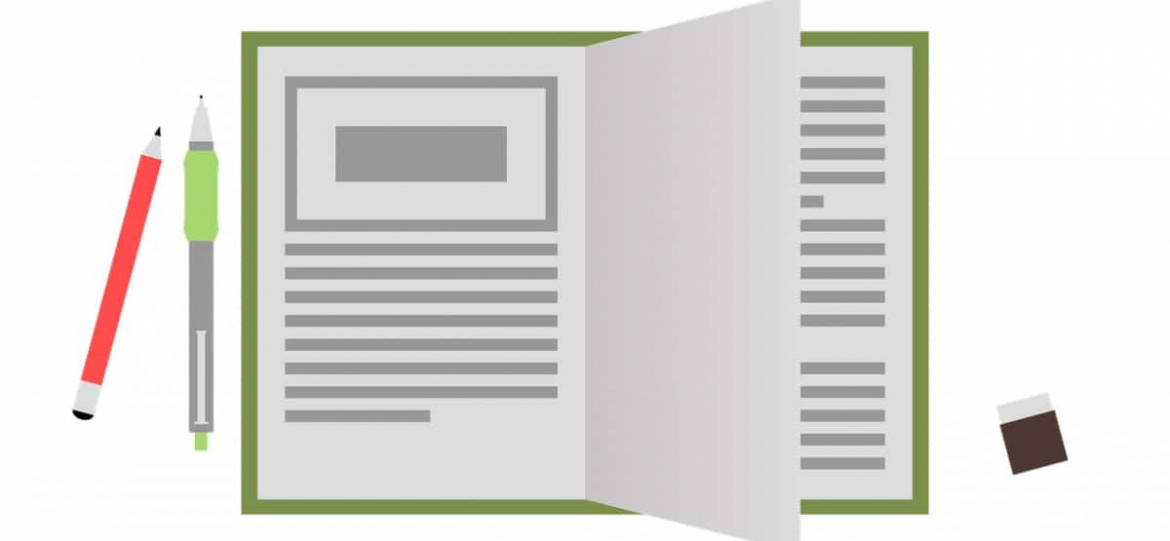Vous envisagez de passer l’examen de Cambridge CAE, également appelé C1 advanced ?
C’est une excellente idée ! Cet examen, valable à vie, vous permettra d’officialiser votre niveau en langue anglaise, et ce, à travers le Monde. En effet, le CAE est l’un des examens qui atteste du meilleur niveau d’anglais sur l’échelle de Cambridge. Il est reconnu dans de nombreuses universités et entreprises en France et à l’étranger.
Dans l’article ci-dessous, nous allons vous livrer tous les détails à connaître pour comprendre et réussir le CAE. Vous découvrirez entre autre :
- Qu’est-ce que le CAE et quelle est sa structure ?
- Le détail de chaque section de l’examen.
- Des exemples d’exercices concrets.
- Des conseils pour vous préparer au CAE et réussir votre examen haut la main
Suivez le guide !
Quelles sont les différentes sections du test C1 advanced ?
Vous avez décidé de passer le CAE ou Cambridge Advanced Exam ? Bien comprendre sa structure est essentiel pour commencer vos révisions sereinement et bien démarrer l’examen le jour J. Vous saurez ainsi à quoi vous attendre pour chaque section, c’est rassurant, ça permet de gagner du temps, d’aller à l’essentiel et surtout d’être efficace !
Le CAE dure quatre heures, ça paraît long mais le jour de l’examen, le temps passe à une vitesse folle. Le C1 Advanced vous teste sur les parties suivantes : Reading and Use of English, Listening, Speaking et Writing. Cet examen a pour but de certifier votre niveau d’anglais.
La structure du Cambridge Advanced
Voici comment chaque partie de l’Examen se décompose :
| Section | Durée | Nombre de parties | Score |
|---|---|---|---|
| Reading and Use of English | 1h30 | 8 parties | 2 - Reading : 1 - Use of English : 1 |
| Writing | 1h30 | 2 questions / sujets (soit 2 écrits à rédiger) | 1 |
| Listening | 40 minutes | 4 parties / 30 questions | 1 |
| Speaking | 15 minutes | 4 parties | 1 |
| Total | 4h | 18 | 5 |
Vous commencez à paniquer ?! Don’t!
La structure de chaque partie, les consignes, sont relativement semblables à chaque session. Autrement dit, si vous connaissez bien le test « type », vous devriez vous en sortir sans difficulté majeure. Feeling better?
Quel est l’objectif de chaque section du test ?
Reading and Use of English
La partie « Reading » du Cambridge Advanced, c’est l’occasion de démontrer votre aptitude à comprendre différents types d’écrits issus de journaux ou magazines spécialisés par exemple.
La partie « Use of English » du CAE mettra, quant à elle, en avant vos compétences grammaticales et lexicales. Vous devrez, par exemple, compléter des textes avec les termes les plus appropriés, trouver des formules équivalentes ou encore répondre à des questions de compréhension.
Writing
Comme son nom l’indique, dans cette partie du Cambridge C1, vous pourrez démontrer toutes vos capacités à vous exprimer à l’écrit en rédigeant deux documents (ex : email, proposition, rapport…).
Listening
Il s’agit ici de démontrer que vous comprenez la plupart des documents audio, qu’il s’agisse d’une interview, d’un extrait d’émission de radio, d’une conversation, etc. Easy peasy !
Speaking
Pour cette partie du CAE, la configuration sera un peu inhabituelle. Vous serez amené(e) à vous exprimer en compagnie d’un autre candidat et face à deux examinateurs. Un peu intimident peut-être mais rien d’insurmontable. Il s’agit simplement de mesurer votre capacité à communiquer de manière pertinente à l’oral. Ne vous a-t-on pas dit que vous « parliez bien anglais » ? C’est le moment de le démontrer au reste du monde anglophone !
Exemples d’exercices pour le Cambridge CAE
Reading and Use of English
Consigne : You are going to read the introduction to a book about the fight for civil rights in America. For questions 1 – 6, choose the answer (A, B, C or D) which you think fits best according to the text.
Texte : The Fight for Civil Rights
In early 1965, Martin Luther King Jr.’s Southern Christian Leadership Conference (SCLC) made Selma, Alabama, the focus of its efforts to register black voters in the South. That March, state and local authorities met with violence protesters who were attempting to march there. As the world watched, the protesters (under the protection of federalized National Guard troops) finally got their wish, walking for three days straight to reach Montgomery. The historic march, and King’s participation in it, greatly helped raise awareness of the difficulty faced by black voters in the South, and the need for a Voting Rights Act, which was passed later that year.
Even after the Civil Rights Act of 1964 prohibited discrimination in voting on the basis of race, attempts by civil rights groups such as the Southern Christian Leadership Council (SCLC) and the Student Nonviolent Coordinating Committee (SNCC) to register black voters were fiercely resisted in southern states like Alabama. In early 1965, Martin Luther King Jr. and SCLC decided to make Selma, located in Dallas County, Alabama, the focus of a voter registration campaign. Alabama Governor George Wallace was a stringent opponent of desegregation, and the local county sheriff in Dallas County had steadfastly opposed black voter registration drives. As a result, only 2 percent of Selma’s eligible black voters (300 out of 15,000) had managed to register.
King had won the Nobel Peace Prize in 1964, and his newfound fame helped to draw international attention to Selma during the consequential months that followed. On February 18, white segregationists attacked a group of peaceful demonstrators in the nearby town of Marion. In the resulting melee, an Alabama state trooper shot and killed Jimmie Lee Jackson, a young African-American demonstrator. In response to Jackson’s death, King and the SCLC planned a massive protest march from Selma to the state capitol of Montgomery, 54 miles away. A group of 600 people set out on Sunday, March 7, but didn’t get far before Alabama state troopers wielding whips, nightsticks and tear gas rushed the group at the Edmund Pettis Bridge and beat them back to Selma. The brutal scene was broadcast on television, infuriating many Americans and drawing civil rights and religious leaders of all faiths to Selma in protest.
King himself led another attempt on March 9, but they had to turn around and go back when state police again blocked the road. That night, a group of segregationists beat another protester, the young white minister James Reeb, to death. Alabama state officials (led by Walllace) tried to prevent the march from going forward, but a U.S. district court judge ordered them to allow it. President Lyndon Johnson also supported the marchers, going on national television to pledge his support and press for passage of new voting rights legislation he was introducing in Congress. Some 2,000 people set off from Selma on March 21, protected by U.S. Army troops and Alabama National Guard forces that Johnson had ordered under federal control. After walking some 12 hours a day and sleeping in fields along the way, they reached Montgomery on March 25.
Nearly 50,000 supporters–black and white–met the marchers in Montgomery, where they gathered in front of the state capitol to hear King and other speakers address the crowd. “No tide of racism can stop us,” King proclaimed from the building’s steps, as viewers from around the world watched the historic moment on television.
On March 17, 1965, even as the Selma-to-Montgomery marchers fought for the right to carry out their protest, President Lyndon Johnson addressed a joint session of Congress, demanding federal voting rights legislation to stop local authorities from impeding African-Americans’ right to vote. That August, Congress passed the Voting Rights Act, which guaranteed the right to vote to all African Americans. Specifically, the act disallowed literacy tests as a requirement for voting, mandated federal oversight of voter registration in areas where tests had previously been used, and gave the U.S. attorney general the duty of challenging the use of poll taxes for state and local elections.
Along with the Civil Rights Act, the Voting Rights Act was one of the most expansive pieces of civil rights legislation in American history. Its effects greatly reduced the disparity between black and white voters in the U.S. and allowed a greater number of African Americans to enter political life at the local, state and national level.
Exemples de 3 questions :
Question 1
Question 2
Question 3
Writing
Consignes : Write your answer in 220 – 260 words in an appropriate style.
Conseil : Try to introduce the topic of global warming with one or two sentences, set out your points and, at the end, summarise your points so that your answer flows in essay style.
Suggestion de réponse :
Global warming is essentially the rise of the planet’s temperatures, which is caused by increased greenhouse gases in the atmosphere. Greenhouse gases (primarily CO2) have been, and are still being, emitted mainly as a result of humans and activities such as burning fossil fuels and tree clearing.
Burning fossil fuels is extremely detrimental to the environment and plays a large part in global warming. In a nutshell, fossil fuels are coal, oil and gas, and the burning of these elements is increasing the amount of CO2 in the atmosphere. World leaders have begun to see the harming effects of fossil fuels and, as a result, the burning of fossil fuels (i.e. through fuel powered cars) will be banned in countries such as France and China from 2040, which is a very positive step for the environment.
Tree clearing is also a major cause of global warming for two reasons. The first being that trees are being cleared through burning, which releases enormous amounts of carbon into the atmosphere with the smoke. The second being is the overall reduction of trees as a result of the clearing. Trees absorb CO2 and with fewer trees in the world, these gases aren’t absorbed as much as they once were.
It is clear that global warming is a result of human activity and, although it is important that each person makes changes to reduce their “carbon footprint”, it’s up to world leaders to bring about wide-spread change and fund eco-friendly alternatives, particular for tree clearing and fossil fuels, to prevent the damage becoming irreparable.
Listening
Dans cette section, vous devrez écouter attentivement un audio et répondre à des questions le concernant.
Audio : You hear two colleagues discussing changes to their working conditions.
Speaking
Dans cette section, on vous demandera de vous exprimer à l’oral au sujet d’une image.
Voici un exemple d’exercice que vous pourriez rencontrer.
Image :

Question : Why do you think that some people decide not to get married?
Conseil : Questions like this often involve comparing, so make sure you’ve practiced your comparative linking words (while, whereas, etc).
Suggestion de réponse :
Well, I guess it really depends on the person. There are many people in the world who see themselves as one part of a whole, whereas others see themselves as islands. It’s tough to say, really. I suppose that marriage is intimidating to some people. It can be hard to stay married to the same person your whole life, and it can be hard to find someone special enough to do so in the first place. If I were to guess, I’d say that some people don’t want to put so much effort in. And if they’re happy in their careers, and have a great social life, it can feel less of a compulsion.
Conseils pour réussir votre examen
La bonne maîtrise de l’anglais, vous l’avez ! Il ne vous manque que l’entraînement ! Alors comment procéder ?
Le conseil de GlobalExam : vous entraîner en conditions réelles ! En d’autres termes, en chronométrant chaque entraînement, chaque partie, chaque exercice.
Pourquoi ? Afin d’identifier clairement :
- Vos lacunes
- Les sections qui vous posent problème
- Les sujets que vous avez du mal à traiter
- Les parties où vous perdez du temps !

Par quoi commencer? Le conseil de GlobalExam :
- Commencez par réaliser un examen blanc en conditions réelles (=chronométré).
Vous ne disposez pas de 4h ? Pas de souci, vous pouvez fractionner le test. Un jour, vous réalisez la partie « Reading and Use of English », ensuite la partie « Listening » … Sans oublier de vous chronométrer ! - Ensuite, travaillez chaque exercice de chaque partie séparément
- Lorsque vous serez plus à l’aise, refaites un test blanc…
Où et comment se préparer au CAE ?
Vous souhaitez vous entraîner en ligne ? Où trouver des examens blancs ?
- Sur le site officiel des examens d’anglais de Cambridge
- Sur le site de GlobalExam. En prime, l’accès à ce premier sujet, on vous l’offre ! Vous voulez essayer ? Inscrivez-vous gratuitement !
Où trouver des exercices types pour chaque partie du Cambridge Advanced C1 ?
Il existe de nombreux ouvrages vous permettant de vous préparer au test, par exemple l’ »Advanced Trainer » de Cambridge English. Si vous voulez vous entraîner n’importe où et n’importe quand, pourquoi ne pas opter pour une préparation en ligne telle que celle de GlobalExam ?
Se préparer au CAE avec GlobalExam
Choisir une préparation en ligne avec GlobalExam a beaucoup d’avantages. Premièrement, vous pourrez étudier quand vous voulez et où vous voulez grâce à un accès illimité à votre compte. Ensuite, vous pourrez choisir un programme personnalisé qui sera adapté à votre niveau et à vos besoins. Autrement dit, vous pourrez progresser rapidement et à votre rythme.
GlobalExam vous accompagne par le biais :
- De trois tests blancs complets et chronométrés (et nos contenus augmentent en permanence)
- D’exercices chronométrés (12 entraînements par exercice de chaque section) avec corrections détaillées !
- De statistiques vous permettant d’identifier très vite vos forces et vos faiblesses
- De fiches de révisions pour travailler vos lacunes !
And you know what? Nos contenus évoluent en permanence. 1500 questions aujourd’hui, encore davantage demain.
Alors, on commence l’entraînement ?!


 OFFERT !
OFFERT !



